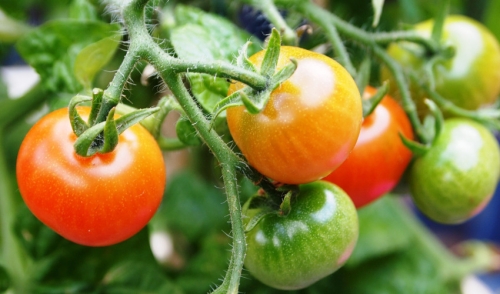
Starting Tomatoes Inside
Early spring is the perfect time to give your tomatoes a head start by starting them indoors. Why so early? Why not just wait a little longer and put the seeds in the ground? There are several reasons why. Most importantly, it’s because in most parts of the country, the growing season just isn’t long enough to do it that way. The seeds require enough warmth to germinate and sprout. In many areas, the first frost of fall would kill the plants before the tomatoes even had a chance to ripen.
By starting your own seeds indoors, you’ll enjoy an earlier, more abundant harvest. You’ll have access to a greater variety, compared to buying already started young plants. In addition, you’ll save money starting with seeds as well.
To begin, you’ll first need to choose your seeds. Go with a variety that is best suited for your local growing season. Also, keep disease resistance in mind if your area is prone to certain types. Did you plan on harvesting all at once? Choose a determinate variety. Otherwise in indeterminate variety will bear tomatoes over a longer period of time and provide a larger window for picking fresh tomatoes.
Containers will be the next thing you’ll need. These can be anything from take-out containers, yogurt cups, or juice containers. As long as what you find is at least 3 inches deep and can accept drainage holes in the bottom, it should be suitable. You’ll need to thoroughly wash and sanitize your containers as well. If you would rather purchase what you need, consider biodegradable seed starting containers (some are made out of compressed peat) that can be placed right into the soil at planning time. The seed starting mix that you choose should be a sterile mix that contains no soil.
To begin, place enough potting mix into the container so that it’s about ½ inch from the top. Try not to pack it down to tightly. Place your seeds on top and cover with about ¼ inch of mix. Put the containers in a tray and pour water into the tray. The potting mix will soak in the needed moisture. While germinating, it’s a good idea to cover the containers (a layer of plastic wrap will work well for this).
For the next step, warmth is the most important ingredient. Light is not needed at this stage. Try to keep the seeds at a constant temperature of 70° to 75° during the germination process. Heat mats are perfect for maintaining a steady temperature while the seeds germinate. Keep an eye on them and re-water as necessary. Once they begin to sprout (about ½ inch tall) it safe to uncover them and move them into a consistently lighted space. The heat mat is no longer needed at this point, as room temperature is fine.
New sprouts require a lot of light. A sunny area, such as a south facing window of your home is fine, but even then it may not be enough light. Consider using a growing lamp to provide continual light (16 to 18 hours) during these critical early stages of growth. Continue to keep the plants watered and try to avoid watering from the top, as you could damage or loosened the sprouts. As your seedlings grow, keep mindful of the conditions outside. Typically, about 4 to 6 weeks from when your seeds begun to sprout is the time to start thinking about transplanting your young tomato plants. They should be several inches tall and have begun branching at this point. However, you first need to be certain that the final spring frost has occurred in your area. Generally, once the overnight temperatures are steadily over 50°, it’s safe. You can’t, however, just take them outside and put them in the ground. You will need to “harden” them off first. This refers to the process of gradually introducing them to the outdoors. To do this, take them outside for a couple hours on a sunny day. Repeat this for longer durations over the next few days. Once you feel that they are properly acclimated, they are ready to transplant. If you are still concerned about exposure, you can protect your young sprouts from a from a late spring frost with garden fabric.


